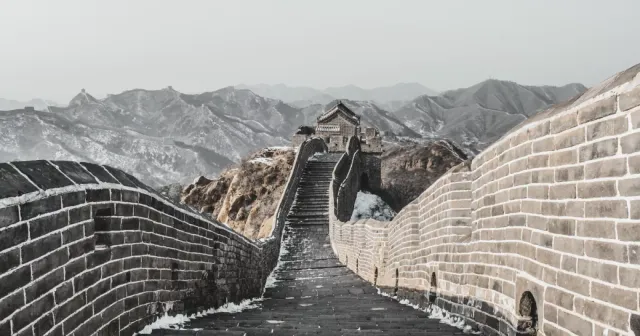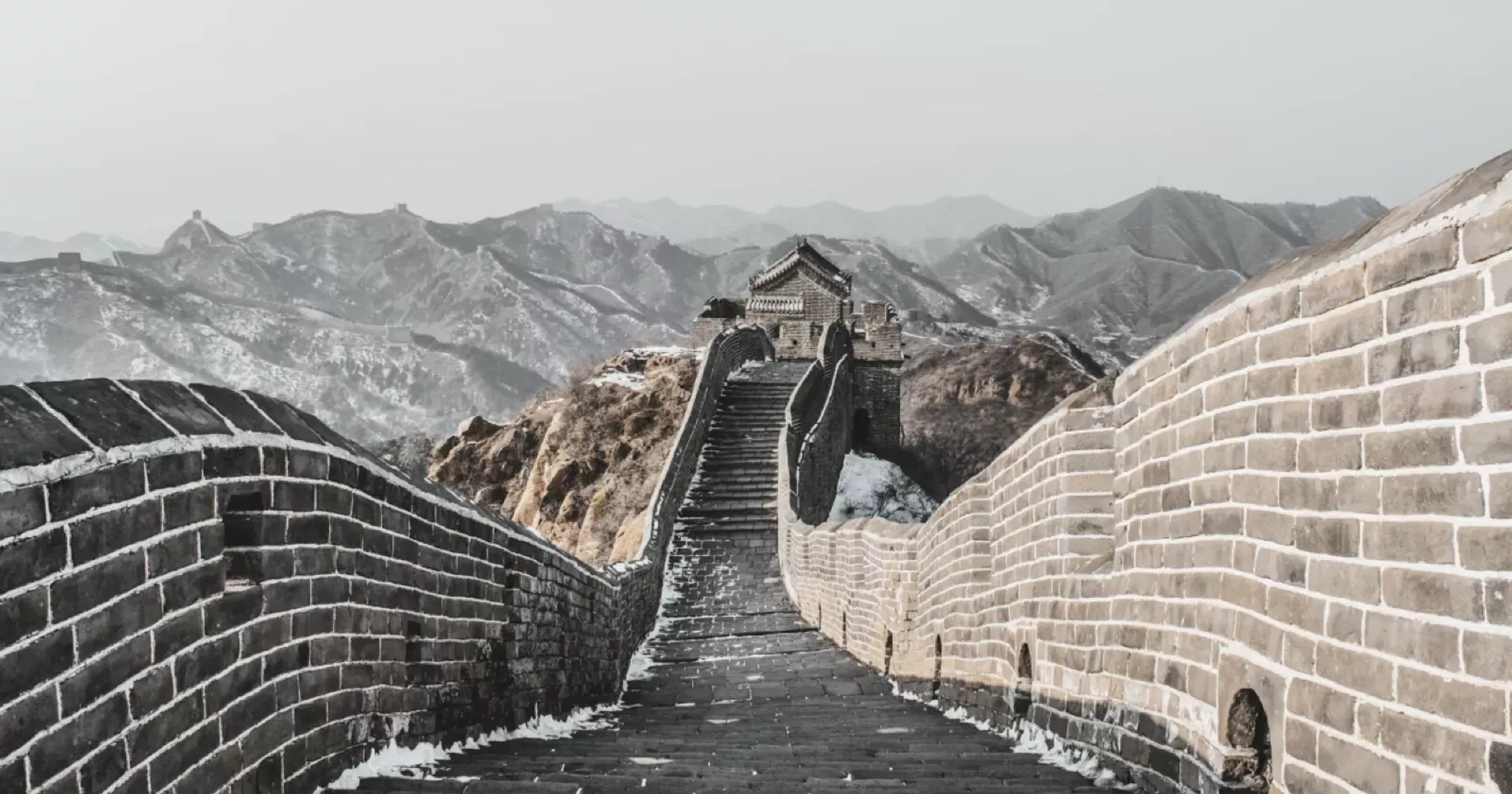The Tubo Empire (simplified: 吐蕃, traditional: 吐蕃, pinyin: Tǔbō, jyutping: tou2 faan4) represents one of the most distinctive and formidable political entities, embodying the power and mystique of Tibetan Buddhism combined with sophisticated esoteric martial arts traditions. Located on the vast Tibetan Plateau, the empire serves as both a geographical buffer between various Chinese dynasties and a source of unique martial arts knowledge that challenges orthodox Chinese fighting traditions.
The Tubo Empire stands apart from other political entities through its integration of religious authority with temporal power, creating a theocratic state where Buddhist masters wield both spiritual influence and martial prowess. The empire’s practitioners bring distinctive fighting methods rooted in tantric practices and esoteric Buddhism, introducing elements to the jianghu that differ fundamentally from traditional Chinese martial arts philosophy.
The empire’s influence extends far beyond its mountainous borders through the activities of figures like Jiumozhi, the Great Wheel Wisdom King, and the Golden Wheel Imperial Preceptor, whose interventions in Chinese martial arts affairs demonstrate how Tibetan Buddhist martial traditions can rival and sometimes surpass orthodox Chinese methods. These characters represent the empire’s role as both exotic foreign power and legitimate participant in the broader martial arts world.
Political structure and governance
Buddhist theocracy
The Tubo Empire operates under a unique system of Buddhist theocracy where religious authority and political power are seamlessly integrated. Unlike Chinese dynasties that maintain theoretical separation between temporal and spiritual governance, the Tubo system recognizes spiritual advancement as the foundation for legitimate political authority.
This integration creates a governmental structure where the highest-ranking Buddhist masters automatically assume positions of political leadership. The emperor (Tsenpo) serves as both temporal ruler and supreme religious authority, while regional governance falls to high-ranking lamas who combine administrative duties with spiritual guidance for their populations.
Governmental Structure:
- Tsenpo (Emperor): Supreme ruler combining temporal and spiritual authority
- State Preceptors: High-ranking Buddhist masters governing major regions
- Wisdom Kings: Martial-spiritual leaders with specialized responsibilities
- Monastery Administrators: Local governance through religious institutions
This system ensures that political decisions reflect Buddhist values while providing spiritual justification for governmental policies. The integration also creates unique opportunities for individuals like Jiumozhi to achieve high political status through martial and spiritual excellence rather than hereditary claims or military conquest.
Regional administration
The empire’s vast territorial extent across the Tibetan Plateau requires sophisticated administrative systems adapted to difficult terrain and scattered populations. Regional governance operates through a network of major monasteries that serve as both spiritual centers and administrative hubs for surrounding territories.
Each major monastery maintains responsibility for local governance while remaining connected to central authority through religious hierarchy and shared doctrinal commitments. This system enables effective administration across vast distances while preserving local autonomy and cultural traditions.
Administrative Features:
- Monastery-centered governance: Religious institutions serving as regional capitals
- Lama administrators: Spiritual leaders handling secular governance
- Caravan route control: Management of trade passages through mountain territories
- Border defense coordination: Military organisation through religious networks
The system’s effectiveness derives from the population’s deep respect for religious authority and the practical advantages of using established monastery networks for communication and resource distribution.
Martial arts traditions
Esoteric Buddhist martial arts
The Tubo Empire’s martial arts represent a unique synthesis of Buddhist spiritual practices with combat techniques, creating fighting systems that differ fundamentally from orthodox Chinese martial arts. These esoteric traditions integrate tantric practices, meditation techniques, and philosophical principles to produce methods that emphasize spiritual cultivation alongside physical prowess.
Unlike Chinese martial arts that typically separate qi cultivation from combat application, Tibetan Buddhist martial arts treat fighting ability as inseparable from spiritual development. Practitioners must achieve specific levels of spiritual understanding before accessing advanced techniques, ensuring that martial power serves enlightenment rather than mere personal ambition.
Core Principles:
- Spiritual integration: Combat techniques linked to meditation and ritual practices
- Tantric elements: Use of esoteric Buddhist methods in martial development
- Hierarchical progression: Advancement based on spiritual achievement as well as technical skill
- Protective purpose: Martial arts serving dharma protection rather than aggression
Dragon-Elephant Prajna Technique
The Dragon-Elephant Prajna Technique (龙象般若功) represents the pinnacle of Tubo martial arts development, combining immense physical power with profound spiritual wisdom. This legendary technique requires decades of intensive practice and deep Buddhist understanding, making it accessible only to the most dedicated and spiritually advanced practitioners.
The technique’s name reflects its dual nature: the dragon represents wisdom and spiritual insight, while the elephant symbolizes tremendous physical strength and endurance. Practitioners who master this method achieve extraordinary physical capabilities while maintaining the mental clarity and compassion essential to Buddhist practice.
Technical Characteristics:
- Immense physical power: Strength rivaling legendary Chinese martial arts
- Spiritual requirement: Progress dependent on Buddhist understanding
- Extended training period: Decades required for meaningful advancement
- Limited practitioners: Very few achieve significant mastery
The technique’s rarity and difficulty make it a symbol of Tubo martial excellence while demonstrating how the empire’s fighting methods integrate spiritual and physical development in ways that Chinese martial arts typically separate.
Specialized monastery techniques
Different monasteries within the Tubo Empire have developed specialized martial arts suited to their specific environments and spiritual focuses. The Dalun Temple exemplifies this diversity through its development of distinctive techniques like the Flaming Sabre and its role in training figures like Jiumozhi.
These specialized techniques reflect both the practical needs of monastery defense and the spiritual symbolism central to Buddhist practice. Fighting methods often incorporate ritual elements and philosophical principles that make them simultaneously martial arts and spiritual practices.
Notable Monastery Techniques:
- Flaming Sabre: Dalun Temple’s signature weapon technique
- Minor Formless Skill: Advanced energy manipulation method
- Tantric weapon forms: Sacred implement martial applications
- Meditation combat methods: Fighting techniques integrating contemplative practices
The diversity of monastery techniques demonstrates how Tubo martial arts adapt to local conditions while maintaining underlying spiritual principles that distinguish them from secular fighting methods.
Key figures and representatives
Jiumozhi, the Great Wheel Wisdom King
Jiumozhi (鸠摩智), known as the Great Wheel Wisdom King (大轮明王), represents the Tubo Empire’s martial excellence and demonstrates both the potential and the dangers inherent in combining spiritual authority with martial prowess. His character arc from accomplished Buddhist master to martial arts obsessive and finally to genuine enlightenment illustrates the complex relationship between spiritual development and combat ability.
As a State Preceptor of Tubo, Jiumozhi wields significant political influence while possessing martial arts skills that rival the greatest Chinese masters. His mastery of the Minor Formless Skill enables him to replicate other schools’ techniques, demonstrating Tubo martial arts’ adaptability and sophistication.
Jiumozhi’s Characteristics:
- Political authority: High-ranking position in Tubo government
- Martial excellence: Skills comparable to Chinese martial arts masters
- Spiritual complexity: Journey from obsession to genuine enlightenment
- Cultural bridge: Representative of Tubo engagement with Chinese martial arts world
His eventual return to pure spiritual practice after losing his martial abilities represents themes about the proper relationship between spiritual development and worldly power.
Golden Wheel Imperial Preceptor
The Golden Wheel Imperial Preceptor (金轮法王) appears in The Return of the Condor Heroes as a formidable representative of Tibetan Buddhist martial arts during the Mongol period. His alliance with Mongol forces demonstrates how the Tubo Empire adapts to changing political circumstances while maintaining its distinctive cultural and martial identity.
His mastery of the Dragon-Elephant Prajna Technique makes him one of the most dangerous opponents faced by Chinese martial artists, while his political connections show how Tubo influence extends beyond the plateau through strategic alliances.
Golden Wheel’s Significance:
- Mongol alliance: Represents Tubo adaptation to changing power structures
- Martial supremacy: Demonstrates Tibetan techniques’ effectiveness against Chinese methods
- Political influence: Shows Tubo involvement in broader regional conflicts
- Cultural persistence: Maintains Tibetan identity while engaging external powers
His character illustrates how the Tubo Empire maintains relevance and influence despite changing political circumstances.
Relationships with other powers
Strategic positioning
The Tubo Empire’s location on the Tibetan Plateau provides unique strategic advantages that enable it to maintain independence while influencing surrounding regions. The plateau’s elevation and difficult terrain create natural defensive barriers while its position between major powers allows for flexible diplomatic relationships.
This geographic advantage enables the empire to serve as both buffer and bridge between competing Chinese dynasties, Central Asian nomadic groups, and Indian kingdoms. The empire’s leaders can choose alliances based on spiritual affinity, political advantage, or martial arts interests rather than being forced into subordinate relationships.
Strategic Advantages:
- Defensive terrain: High altitude and difficult access protecting core territories
- Diplomatic flexibility: Ability to maintain relationships with multiple powers
- Trade route control: Influence over passages between China and Central Asia
- Cultural uniqueness: Distinct identity reducing assimilation pressure
Relations with Chinese dynasties
The Tubo Empire maintains complex relationships with various Chinese dynasties that combine elements of cooperation, competition, and mutual respect. These relationships often focus on martial arts exchanges and spiritual dialogues rather than purely political or economic considerations.
Chinese martial artists frequently seek training opportunities in Tubo territories, while Tubo practitioners engage with Chinese schools to expand their technical knowledge. This exchange enriches both traditions while maintaining their distinctive characteristics.
Relationship Patterns:
- Martial arts exchange: Cross-training and technique sharing
- Spiritual dialogue: Buddhist philosophical discussions and debates
- Political independence: Maintaining autonomy while engaging diplomatically
- Cultural respect: Mutual recognition of distinct traditions and values
Alliance considerations
The empire’s alliance patterns reflect both strategic necessity and spiritual affinity. The relationship with the Mongol Empire during the period covered in The Return of the Condor Heroes demonstrates how Tubo leaders can find common ground with nomadic powers that share certain cultural and religious characteristics.
These alliances typically involve limited cooperation for specific purposes rather than comprehensive political integration. The Tubo Empire maintains its independence and cultural identity while participating in broader regional conflicts when beneficial.
Alliance Characteristics:
- Limited scope: Cooperation for specific purposes rather than general subordination
- Cultural compatibility: Alliances based on shared values or practices
- Tactical advantage: Strategic cooperation enhancing both partners’ positions
- Maintained autonomy: Preservation of independent decision-making authority
Cultural and spiritual influence
Buddhist scholarship and practice
The Tubo Empire serves as a major center for Buddhist scholarship and advanced spiritual practice, attracting students and practitioners from throughout Asia. The empire’s monasteries house extensive libraries and support scholarly traditions that preserve and develop Buddhist knowledge across multiple schools and traditions.
This scholarly tradition provides the foundation for the empire’s distinctive martial arts while creating networks of influence that extend far beyond political boundaries. Buddhist masters trained in Tubo institutions often establish connections throughout the region, spreading both spiritual knowledge and martial techniques.
Scholarly Traditions:
- Textual preservation: Maintenance of Buddhist scriptures and commentaries
- Philosophical development: Advanced study of Buddhist doctrine and practice
- Cross-cultural dialogue: Exchange with Indian, Chinese, and Central Asian Buddhist traditions
- Practical application: Integration of theoretical knowledge with meditation and martial practice
Martial arts philosophy
Tubo martial arts philosophy differs from Chinese traditions through its emphasis on compassion, wisdom, and the protection of dharma as primary motivations for developing fighting ability. Practitioners are expected to use martial skills only for defensive purposes and spiritual development rather than personal advancement or conquest.
This philosophical foundation creates martial artists who combine formidable fighting ability with genuine spiritual development, producing individuals capable of both devastating combat techniques and profound compassion. The integration prevents the moral corruption that often accompanies great martial power in other traditions.
Philosophical Elements:
- Compassionate motivation: Fighting ability developed for protection rather than aggression
- Wisdom cultivation: Martial practice integrated with intellectual and spiritual development
- Dharma protection: Combat skills serving religious and cultural preservation
- Spiritual progression: Advancement based on character development as well as technical ability
Behind the scenes
The Tubo Empire in Jin Yong’s novels represents the author’s sophisticated understanding of Tibetan culture and his interest in exploring how different religious and philosophical traditions produce distinctive approaches to martial arts and governance. The empire serves as both exotic setting and legitimate cultural alternative to Chinese political and martial arts traditions.
Historical foundation
The historical Tubo Empire (618-842 CE) was indeed one of the great powers of medieval Asia, controlling vast territories across the Tibetan Plateau and extending its influence into Central Asia, China, and the Indian subcontinent. The empire was founded by Songtsen Gampo (c. 617-649 CE), who unified various Tibetan tribes and established the first centralized Tibetan state.
Under Songtsen Gampo and his successors, the Tubo Empire became a major military and political force. The empire successfully challenged Tang China for control of Central Asian trade routes, occupied the Tang capital Chang’an briefly in 763 CE, and maintained military pressure on Chinese frontiers for over two centuries. The empire’s military success was based on excellent cavalry, strategic use of high-altitude terrain, and effective coordination between scattered tribal groups.
The historical empire was also crucial in the development and spread of Tibetan Buddhism. While traditional Bon religion remained important, the imperial court actively promoted Buddhism, inviting scholars from India and establishing major monasteries. The famous Jokhang Temple in Lhasa was built during Songtsen Gampo’s reign, and the empire played a key role in translating Buddhist texts into Tibetan.
The empire’s political structure combined traditional Tibetan clan leadership with Buddhist religious authority and administrative innovations borrowed from Tang China. This hybrid system created a distinctive form of governance that balanced competing interests while maintaining cultural autonomy.
Cultural and religious context
Jin Yong’s portrayal of Tubo draws on the historical empire’s unique position as a bridge between different cultural traditions. The real Tubo Empire was influenced by Indian Buddhism, Chinese administrative practices, Central Asian nomadic traditions, and indigenous Tibetan culture, creating a synthetic civilization that combined elements from multiple sources while maintaining distinct identity.
The empire’s Buddhist character was particularly important historically. Tibetan Buddhism developed distinctive characteristics through its integration with traditional Tibetan practices and its geographical isolation from other Buddhist centers. The tradition’s emphasis on tantric practices, reincarnation lineages, and the integration of secular and religious authority provided Jin Yong with rich material for creating distinctive martial arts and political systems.
The historical importance of monasteries as political and cultural centers gave Jin Yong a realistic foundation for portraying religious institutions as sources of both spiritual authority and practical power. The tradition of scholar-warriors and the integration of intellectual, spiritual, and martial development reflected actual historical patterns in Tibetan culture.
Literary and thematic functions
Jin Yong uses the Tubo Empire to explore themes about the relationship between spiritual development and worldly power, the possibility of alternative approaches to governance and martial arts, and the benefits and challenges of cultural exchange. The empire provides a legitimate alternative to Chinese cultural assumptions while maintaining internal consistency and authenticity.
The portrayal of Tubo martial arts as fundamentally different from Chinese traditions allows Jin Yong to examine how different philosophical and spiritual foundations produce different approaches to combat and personal development. The emphasis on spiritual requirements for martial advancement creates interesting narrative tensions and character development opportunities.
The empire’s political independence and cultural distinctiveness also enable Jin Yong to explore themes about cultural identity, the relationship between tradition and adaptation, and the possibility of maintaining autonomy while engaging with larger political and cultural forces.
Character development and conflict
The Tubo Empire provides Jin Yong with opportunities to create characters who combine exotic appeal with genuine depth and authenticity. Figures like Jiumozhi and the Golden Wheel Imperial Preceptor represent serious threats to Chinese martial artists while embodying legitimate cultural and spiritual traditions rather than simple antagonistic forces.
The empire’s distinctive martial arts and spiritual practices create natural conflicts with Chinese orthodoxy while providing opportunities for mutual learning and growth. Characters who engage with Tubo traditions often return with expanded perspectives and enhanced abilities, demonstrating the benefits of cultural exchange.
The integration of spiritual and martial development in Tubo traditions also provides Jin Yong with frameworks for exploring character development that goes beyond simple technique acquisition to include genuine wisdom and moral growth.
Portrayals
The Tubo Empire has appeared in various adaptations of Jin Yong’s novels:
Demi-Gods and Semi-Devils
- Various TV and film adaptations have featured Jiumozhi and the Dalun Temple, emphasizing the exotic nature of Tibetan Buddhist martial arts
- Productions typically highlight the visual distinctiveness of Tubo characters through costume design and architectural settings
The Return of the Condor Heroes
- The Golden Wheel Imperial Preceptor appears as a major antagonist representing Tibetan Buddhist martial arts
- Adaptations often emphasize the power and mystery of the Dragon-Elephant Prajna Technique
Most portrayals focus on the visual and cultural distinctiveness of Tubo characters while attempting to represent the spiritual depth and martial sophistication of their traditions.
See also
External links
- Tibet on Wikipedia
- Tibetan Empire on Wikipedia
- Tibetan Buddhism on Wikipedia
- Tubo on Chinese Wikipedia (Chinese)


